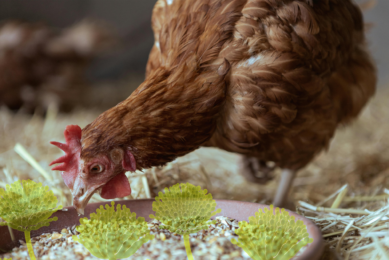US drought ideal conditions for aflatoxin

Drought and extreme heat have brought about ideal conditions for Aspergillus ear rot in corn.
Farmers and growers should take care and inspect their fields, Purdue Extension plant pathologist Kiersten Wise says.
The fungus, which infects corn ears through the silks or wounds, produces aflatoxin, a toxic carcinogen that also can cause health problems for livestock that consume contaminated corn.
“Aspergillus ear rot is out there, but it varies greatly from field to field, mostly depending on planting time and environmental conditions at pollination,” Kiersten Wise said. “There is no field without some potential for the disease.”
Fields most at risk are those in which corn was planted in late March to early April, due to the high temperatures and drought stress that occurred when that corn was pollinating. Even if corn was planted later in April, it is still at risk if it was under extreme drought stress during pollination, planted in sandy soils or experienced insect and hail damage.
“Producers should scout fields prior to harvest and determine the level of incidence of the disease in the field,” Wise said.
The disease can be identified by its olive green, mouldy growth on corn ears.
If growers suspect the disease, they can submit grain samples to Purdue’s Animal Disease Diagnostic Laboratory, for aflatoxin analysis. This lab routinely screens samples for aflatoxin.
The US Department of Agriculture regulates how much aflatoxin can be in finished livestock feed and corn for human consumption. Regulations vary by species but are especially tight for consumption by humans and dairy cattle, at 20 parts per billion (ppb). Regulations for other species are:
•100 ppb in corn grain for breeding cattle, swine and mature poultry.
•200 ppb in corn grain intended for finishing swine of 100 pounds or greater.
•300 ppb in corn grain intended for finishing beef cattle.
Grain elevators are likely to reject loads of corn that exceed government regulations, or they could penalise producers by docking the price.
“At this point in the season, there are no management strategies for reducing ear rots in fields that will remain for grain production,” Wise said.
But she and several of her Purdue Extension colleagues teamed up to offer some strategies to help keep the aflatoxin issue from worsening:
•Harvest corn as early as possible. Late-season rains can increase mould growth and aflatoxin levels.
•Dry grain to less than 15 percent moisture. Make sure to dry grain promptly to keep aflatoxin problems from getting worse.
•Remove fine material. Fines often contain higher toxin levels than the grain and can interfere with drying and aeration.
•Clean equipment inside and out before and after use. Mouldy or insect-infested kernels can contaminate next year’s crop.











